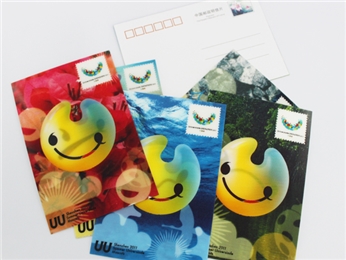In the realm of art and innovation, the concept of depth and perspective has always fascinated creators and audiences alike. One remarkable manifestation of this fascination is the mesmerizing world of 3D postcards. These tiny marvels ingeniously play with perception, transforming two-dimensional surfaces into immersive landscapes that seem to defy reality. Let's embark on a journey to understand the mechanics behind the enchanting allure of 3D postcards.
The Anatomy of 3D Postcards
At first glance, a 3D postcard appears deceptively simple—a flat piece of cardstock featuring a captivating scene. However, upon closer inspection, the magic begins to unfold. A 3D postcard is, in fact, a carefully orchestrated layering of various materials, each strategically placed to create a stunning illusion of depth and dimension.
Layer by Layer: Creating Depth
The heart of a 3D postcard lies in its layers. The illusion of depth is achieved by dividing the image into multiple layers, each representing a different aspect of the scene. For instance, in a landscape scene, the foreground elements might be on the top layer, while progressively distant objects are placed on subsequent layers.Each layer is meticulously designed and hand-cut or die-cut with intricate patterns that mirror the objects they represent. This attention to detail is essential for crafting a realistic illusion, as the patterns influence how light interacts with the layers to create shadows and highlights.
The Art of Assembling
Once all the layers are prepared, they are artfully assembled. The layers are stacked one on top of the other, each slightly elevated from the layer beneath it. This arrangement allows for varying degrees of light penetration, casting shadows and enhancing the three-dimensional effect. As light interacts with the layers, it accentuates the illusion of distance and perspective, making the scene come alive.
Playing with Light and Shadows
One of the most captivating aspects of 3D postcards is the way they manipulate light and shadows. The intricate layering not only creates depth but also influences how light interacts with the surfaces. Depending on the angle of illumination and the observer's viewpoint, the shadows shift, adding an element of dynamism to the scene.

Perspective and Illusion
Central to the success of 3D postcards is the careful consideration of perspective. Artists must intuitively grasp the principles of spatial relationships and adjust the size and complexity of each layer accordingly. Objects that are meant to appear closer are cut in finer detail and placed on the upper layers, while those meant to be in the distance are simplified and situated on the lower layers.The human brain is naturally wired to interpret visual cues, and 3D postcards exploit these cues masterfully. The brain processes the subtle differences in layering and interprets them as variations in distance, tricking the mind into perceiving a tangible, multi-dimensional scene.
Enhancing Realism: Techniques and Materials
Artisans employ various techniques to enhance the realism of 3D postcards. Embossing and debossing are common techniques used to create textures and simulate contours. Adding a touch of color to specific layers can accentuate focal points or evoke a particular mood. The combination of these techniques transforms the flat layers into dynamic, tactile landscapes that beckon the observer to explore.
The Experience of 3D Postcards
Interacting with a 3D postcard is a sensory experience like no other. As one tilts the postcard, the layers shift, shadows dance, and the scene seems to come alive. The sense of discovery and wonder is akin to peering through a window into another world. The interactive nature of 3D postcards elevates them beyond mere artworks—they become bridges between the imagination of the creator and the perception of the observer.
A Window into the Future
As technology continues to advance, we can anticipate exciting innovations within the realm of 3D postcards. Augmented reality and virtual reality could seamlessly merge with these creations, allowing observers to step into the scenes they once only admired from afar. The fusion of old-world craftsmanship with modern technology could unlock new dimensions of creativity and interactivity.
In conclusion, 3D postcards are not just images on paper; they are portals to the imagination. Through the artful arrangement of layers, manipulation of light and shadow, and mastery of perspective, these miniature wonders transport us to realms that exist at the intersection of reality and illusion. As we marvel at their intricacy, we are reminded of the boundless capacity of human creativity to craft experiences that delight, astonish, and captivate.
© Copyright: Shenzhen Asoka Printing Co.,Ltd All Rights Reserved. sitemap.xml | sitemap.html | Terms & Conditions | Privacy